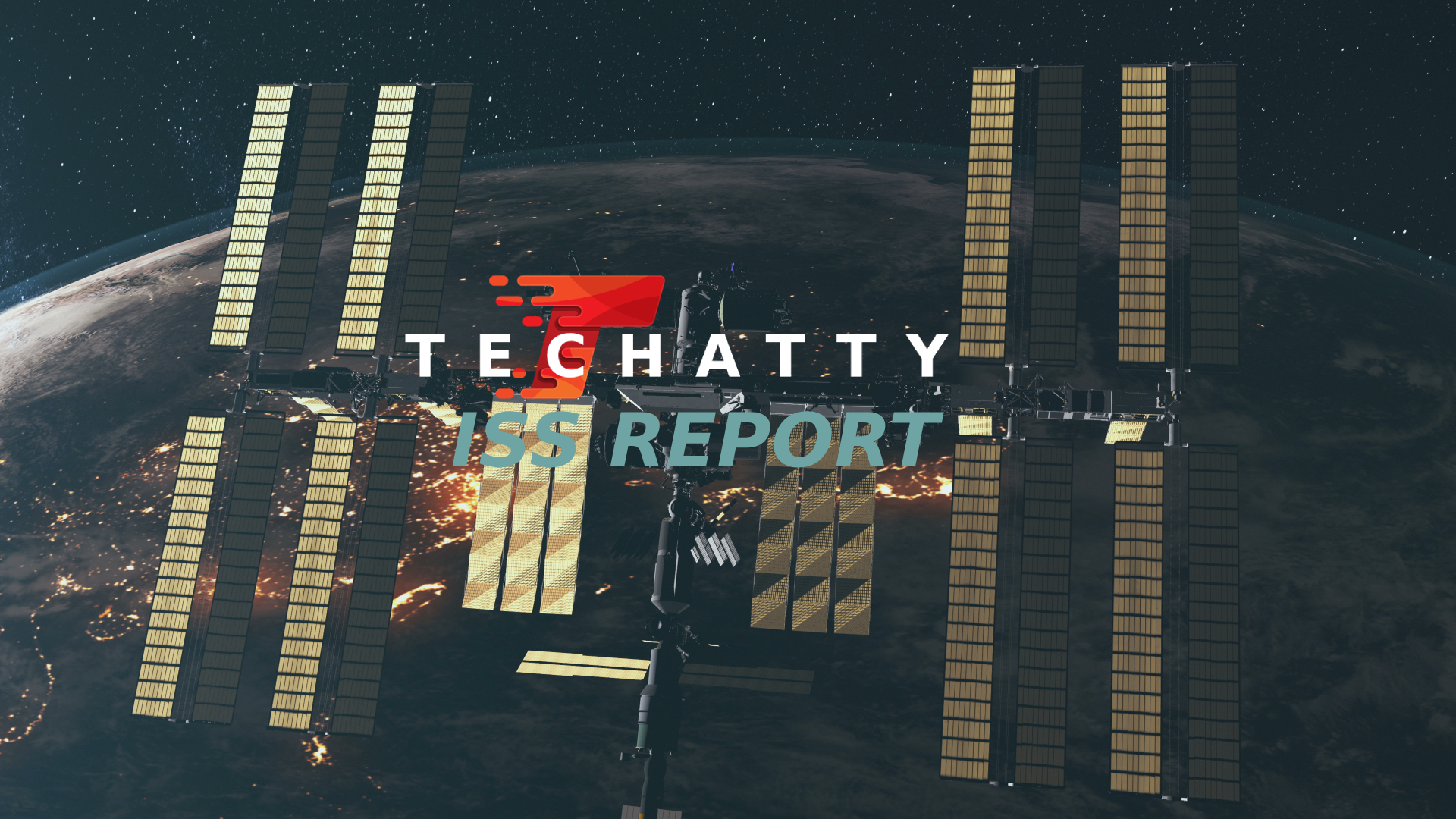ISS Daily Summary Report – 4/11/2023
Payloads: Cardinal Heart 2.0: The crew changed the media and sampled eight of the sixteen tissue chambers. The media contains buffers, food, and nutrients needed to support the cells. They also performed fixation operations on the remaining eight of the sixteen tissue chambers. Fixation refers to a group of techniques which are used to preserve …

Cardinal Heart 2.0: The crew changed the media and sampled eight of the sixteen tissue chambers. The media contains buffers, food, and nutrients needed to support the cells. They also performed fixation operations on the remaining eight of the sixteen tissue chambers. Fixation refers to a group of techniques which are used to preserve various aspects of the samples for later analysis. A previous investigation showed that four weeks of microgravity exposure caused significant changes in heart cell function and gene expression that could lead to long-term damage or cardiac muscle atrophy. Effect of Microgravity on Drug Responses Using Heart Organoids (Cardinal Heart 2.0) uses heart organoids to test whether clinically approved drugs reduce these microgravity-induced changes in heart cell function. Results could support development of effective drug combinations to improve the health of astronauts and patients on Earth.
Manufacturing Device (ManD): As the first part of the troubleshooting for the failed print attempts last week, the crew inspected and removed the extruder. The Additive Manufacturing Facility (AMF) enables the production of components on the ISS for both NASA and commercial objectives. Parts, entire experiments, and tools can be created on demand utilizing the AMF that is installed into an EXPRESS Rack locker location. The AMF is capable of producing parts out of a wide variety of thermo-polymers, including engineered plastics.
Plant Habitat-03A: The crew gained access to the Carbon Dioxide (CO2) bottle area and verified the CO2 bottle valves were closed. This will help ensure CO2in the bottles is available for subsequent facility operations. Plants exposed to environmental stress, including spaceflight, undergo epigenetic changes that involve adding extra information to deoxyribonucleic acid (DNA) rather than changing existing information. Epigenetic Adaptation to the Spaceflight Environment – Accumulated Genomic Change Induced by Generations in Space (Plant Habitat-03) assesses whether epigenetic adaptations in one generation of plants grown in space can transfer to the next generation. This could help identify genetic elements that increase the adaptability of plants to spaceflight, a first step toward developing cultivars better suited to provide food as well as air and water purification in life support systems on future space missions.
Sphere Camera-1 (SphereCam-1): The SphereCam-1 hardware and memory cards were removed and stowed. SphereCam-1 uses a commercial off-the-shelf ultra-high resolution digital movie camera with a wide-angle lens to collect footage in microgravity and evaluate technical performance of the camera. Investigators plan to use results to design and develop subsequent cameras for testing and, ultimately, provide a product that could support groundbreaking imaging of space with greater resolution, detail, and sharpness than anything currently available commercially.
Systems:
Regenerative Environmental Control and Life Support System (ECLSS) Recycle Tank Drain/Fill: The crew set up the drain of the installed Recycle Tank to a Brine EDV using the Brine Transfer Hose. After setting up, the ground team initiated the drain using the Urine Transfer System (UTS). Following that, the crew terminated the drain of the installed Recycle Tank to a EDV and then repositioned the fill/drain valve to fill. In the next step of the process, the crew swapped the EDV in the offload EDV spot of the UTS. Finally, the crew configured the Urine Processor Assembly (UPA) Fill Drain Valve for UPA processing. The UPA, part of the Regen ECLSS System, produces distillate from a mixture of pretreated urine, urine flush water, and Crew Health Care System waste water.
Cargo Dragon Departure Preparations: In preparation of the SpaceX-27 (SpX-27) Cargo Dragon departure on April 15th, the crew completed an On-Board Training (OBT) Departure Review. The OBT reviews provide the crew refresher training to ensure the crew can properly and efficiently perform the necessary steps during departure. Additionally, the crew continued executing SpX-27 packing operations. The operations focused on the mid/center closeout packing, bubble wrapping, and strap tightening.
In Flight Maintenance (IFM) Treadmill 2 (T2) Internal Thermal Control System (ITCS) Inspection: Using an endoscope, the crew performed an inspection of the T2 ITCS return and supply hoses for damage to previous repairs that were made. The ITCS provides equipment cooling, and heat rejection through a combination of water loops and interface heat exchangers. T2 is the second generation ISS treadmill intended for use by USOS crewmembers to maintain crew health during extended visits to the ISS.
Completed Task List Activities:
- IFM Node 2 Forward Vestibule Photo Activity
- Wanted Poster for Cable Tie Head Cutter and Cable Tie Strap Cutter
Today’s Ground Activities:
All activities are complete unless otherwise noted.
- WSGT Circuit Breaker Replacement
- SSCC-3 Maintenance
- Cardinal Heart 2.0 Support
- MSS Survey of Cargo Dragon
- Regenerative ECLSS RTD Support
Look Ahead Plan
Wednesday, April 12 (GMT 102)
Payloads:
- Cold Atom Lab GSC Sample
- EarthKAM Lens Change
- Food Physiology
- HRF Veggie POMS Questionnaires
- Kubik 5/6 Remove
- ManD Troubleshooting
- Rhodium DARPA run 4 conclude
- Standard Measures
Systems:
- Cargo Dragon – Transfer Cargo Operations
- Cargo Dragon LiOH Swap
- EHS AQM Vent Vacuum
- EHS TOCA WRS Sample Analysis
- JEM SLT Deactivation/Activation
Thursday, April 13 (GMT 103)
Payloads:
- Engineered Heart Tissue-2
- Food Physiology
- POLAR CS Transfers
- Standard Measures
- Tangolab-3 Card Cube Remove
Systems:
- Cargo Dragon – Transfer Cargo Operations
- WHC Manual Fill/Terminate
- Installation of EHIP, LREBA, and NECA/ERCA on Orlan-MKS
- Monitor Cargo Dragon DTF Test
- USOS Window Shutter Close
Friday, April 14 (GMT 104)
Payloads:
- ADSEP/BFF Cassette Remove
- Cold Stowage DCB Packing
- EarthKAM Session Conclude
- Engineered Heart Tissue-2
- Food Physiology
- Ice Cubes Exchange
- PAUL h/w Remove
- POLAR CS Transfers and Desiccant Swap
- Standard Measures
Systems:
- JAXA T61P Laptops Battery Removal
- Swap SSC 20 and 12 Swap
- Cargo Dragon – Transfer Cargo Operations
Today’s Planned Activities:
All activities are complete unless otherwise noted.
- HRF Generic Collection and MELFI Sample Insertion Operations
- LSG Primary Crew Restraint Unfold
- Mass Measurement Device Procedure Review and Setup
- Manufacturing Device Extruder and Feedstock Check
- Cargo Dragon – Transfer Cargo Operations
- OBT Cargo Dragon Depart Review
- Cardinal Heart 2.0 Media Change, Preservation, and Sampling
- Sphere Cam Hardware Remove
- Regenerative ECLSS Recycle Tank Drain
- HRF Inventory Stow Track
- Plant Habitat Facility Procedure Review and Bottle Close
- Photo T/V (P/TV) ARED Exercise Video Setup, Stow, and Verification
- Standard Measures Collection Setup
- Cardinal Heart MELFI Sample Insertion Operations Session and Media Bag Retrieval
- LSG-Front Glove-Swap
- Cygnus – Transfer Cargo Operations
- Public Affairs Office (PAO) Event – Lab
- IFM T2 ITCS Inspection
- UTS Offload EDV Swap
- Cargo Dragon Mid/Center Closeout Pack





































